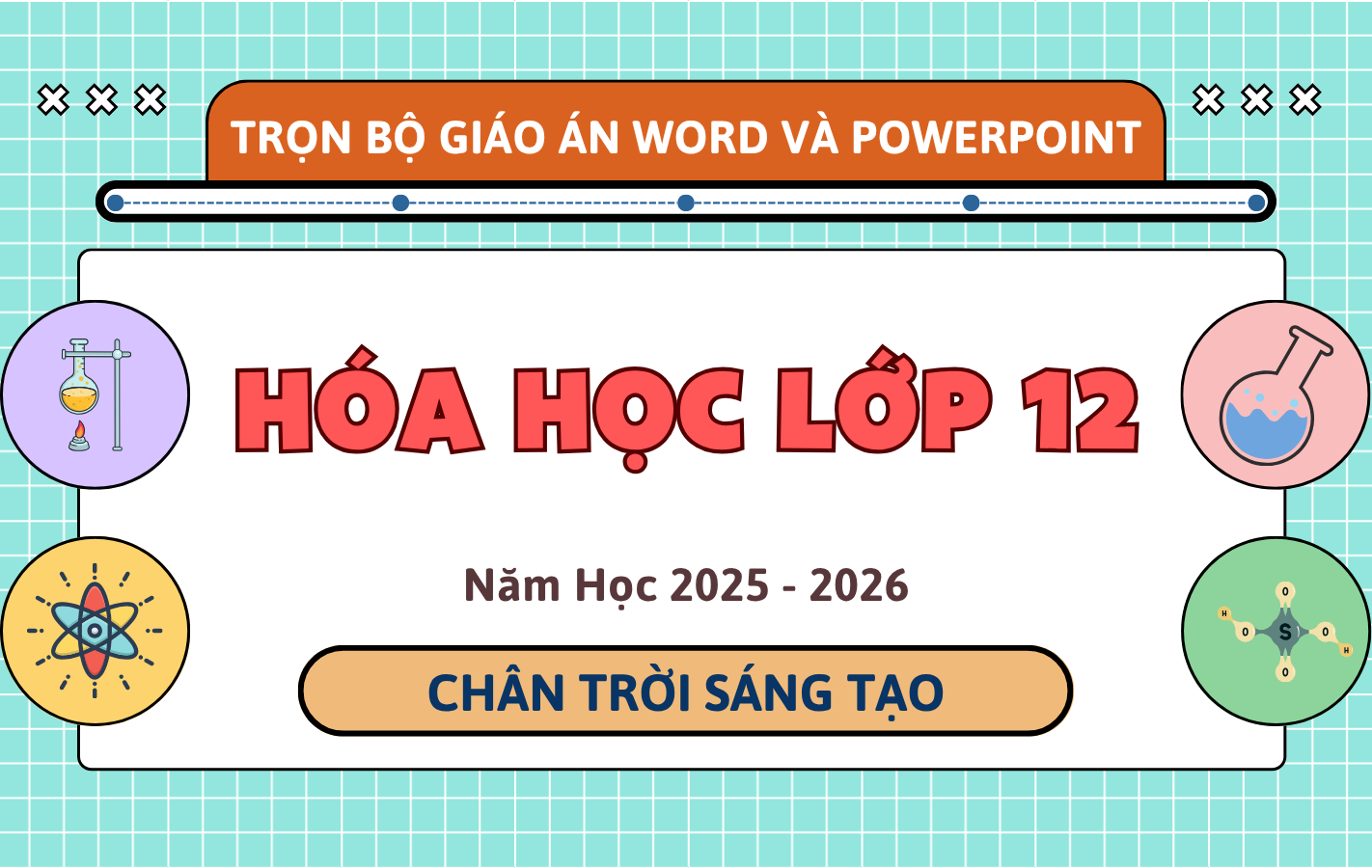Câu hỏi:
Cho hàm số $y = f(x) = x^3 - 3x^2 - 9x + 5$.
Đáp án đúng: Đúng, Sai, Sai, Sai
Xét hàm số $y=f(x) = x^3-3x^2-9x + 5$.
– Tập xác định của hàm số là $\mathbb{R}$.
– Ta có $y' = 3x^2-6x-9$; $y'=0$ khi $x = -1$ hoặc $x = 3$.
Bảng biến thiên của hàm số như sau:

– Hàm số đồng biến trên mỗi khoảng $(-\infty;-1)$ và $(3;+\infty)$; nghịch biến trên khoảng $(-1;3)$. Do đó, ý a) đúng.
– Hàm số đã cho đạt cực tiểu tại $x=3$, $y_{CT}=-22$; đạt cực đại tại $x = -1$, $y_{CĐ}=10$. Do đó, ý b) sai.
– Với $x=0$ thì $y=5$; với $x=1$ thì $y=-6$; với $x = -1$ thì $y=10$.
Do đó, đồ thị hàm số đã cho đi qua các điểm $(0;5)$, $(1;-6)$, $(-1;10)$.
Do đó, ý c) sai.
– Từ bảng biến thiên ta suy ra đường thẳng $y=-22$ cắt đồ thị hàm số đã cho tại 2 điểm phân biệt. Do đó, ý d) sai.
Câu hỏi này thuộc đề thi trắc nghiệm dưới đây, bấm vào Bắt đầu thi để làm toàn bài
Câu hỏi liên quan
Cho hình chóp $S.ABCD$ có đáy $ABCD$ là hình bình hành tâm $O$. $G$ là điểm thỏa mãn $\overrightarrow{GS}+\overrightarrow{GA}+\overrightarrow{GB}+\overrightarrow{GC}+\overrightarrow{GD}=\overrightarrow{0}$. Khi đó:
$\overrightarrow{AB}+\overrightarrow{BC}+\overrightarrow{CD}+\overrightarrow{DA}=\overrightarrow{SO}$
$\overrightarrow{OA}+\overrightarrow{OB}+\overrightarrow{OC}+\overrightarrow{OD}=\overrightarrow{0}$
$\overrightarrow{SB}+\overrightarrow{SD}=\overrightarrow{SA}+\overrightarrow{SC}$
$\overrightarrow{GS}=3\overrightarrow{OG}$
– Ta có: $\overrightarrow{AB} + \overrightarrow{BC} + \overrightarrow{CD} + \overrightarrow{DA} = \overrightarrow{AA} = \vec{0}$ nên ý a) sai.
– Vì $O$ là tâm hình bình hành $ABCD$ nên $O$ là trung điểm của $AC$ và $BD$.
Khi đó, $\overrightarrow{OA} + \overrightarrow{OC} = \vec{0}$; $\overrightarrow{OB} + \overrightarrow{OD} = \vec{0}$, suy ra $\overrightarrow{OA} + \overrightarrow{OB} + \overrightarrow{OC} + \overrightarrow{OD} = \vec{0}$.
Vậy ý b) đúng.
$\begin{cases} \overrightarrow{SB} + \overrightarrow{SD} = 2\overrightarrow{SO} \\ \overrightarrow{SA} + \overrightarrow{SC} = 2\overrightarrow{SO} \end{cases}$, do đó $\overrightarrow{SB} + \overrightarrow{SD} = \overrightarrow{SA} + \overrightarrow{SC}$ nên ý c) đúng.
– Ta có
$\overrightarrow{GS} + \overrightarrow{GA} + \overrightarrow{GB} + \overrightarrow{GC} + \overrightarrow{GD} = \vec{0}$
$\Leftrightarrow \overrightarrow{GS} + (\overrightarrow{GO}+\overrightarrow{OA}) + (\overrightarrow{GO}+\overrightarrow{OB}) + (\overrightarrow{GO}+\overrightarrow{OC}) + (\overrightarrow{GO}+\overrightarrow{OD}) = \vec{0}$
$\Leftrightarrow \overrightarrow{GS} + 4\overrightarrow{GO} + (\overrightarrow{OA}+\overrightarrow{OB}+\overrightarrow{OC}+\overrightarrow{OD}) = \vec{0}$
$\Leftrightarrow \overrightarrow{GS} + 4\overrightarrow{GO} = \vec{0} \Leftrightarrow \overrightarrow{GS} = 4\overrightarrow{OG}$.
Vậy ý d) sai.
Cho hình lập phương $ABCD.A'B'C'D'$ có cạnh bằng $a$. Khi đó:
$\overrightarrow{B'B}-\overrightarrow{DB}=\overrightarrow{B'D}$
$\overrightarrow{BA}+\overrightarrow{BC}+\overrightarrow{BB'}=\overrightarrow{BD}$
$|\overrightarrow{BC}-\overrightarrow{BA}+\overrightarrow{C'A}|=2a$
Với $M, N$ lần lượt là trung điểm của $AD, BB'$ thì $\cos(\overrightarrow{MN}, \overrightarrow{AC'}) = \frac{\sqrt{3}}{3}$
– Ta có: $\overrightarrow{B'B} - \overrightarrow{DB} = \overrightarrow{B'B} + \overrightarrow{BD} = \overrightarrow{B'D}$. Do đó, ý a) đúng.
– Theo quy tắc hình hộp, ta có: $\overrightarrow{BA} + \overrightarrow{BC} + \overrightarrow{BB'} = \overrightarrow{BD'} \neq \overrightarrow{BD}$. Vậy ý b) sai.
– Ta có: $\overrightarrow{BC} - \overrightarrow{BA} + \overrightarrow{C'A} = \overrightarrow{AC} + \overrightarrow{C'A} = \overrightarrow{C'A} + \overrightarrow{AC} = \overrightarrow{C'C}$.
Do đó, $|\overrightarrow{BC} - \overrightarrow{BA} + \overrightarrow{C'A}| = |\overrightarrow{CC'}| = CC' = a$. Vậy ý c) sai.
–
.png)
Vì AC' là đường chéo của hình lập phương ABCD. A'B'C'D' có cạnh bằng $a$ nên $AC' = a\sqrt{3}$.
Ta có: $\overrightarrow{MN} = \overrightarrow{AN} - \overrightarrow{AM} = \overrightarrow{AB} + \overrightarrow{BN} - \overrightarrow{AM} = \overrightarrow{AB} + \frac{1}{2}\overrightarrow{BB'} - \frac{1}{2}\overrightarrow{AD}$.
Suy ra $MN^2 = (\overrightarrow{AB} + \frac{1}{2}\overrightarrow{BB'} - \frac{1}{2}\overrightarrow{AD})^2$
$= \overrightarrow{AB}^2 + \frac{1}{4}\overrightarrow{BB'}^2 + \frac{1}{4}\overrightarrow{AD}^2 + \overrightarrow{AB} \cdot \overrightarrow{BB'} - \overrightarrow{AB} \cdot \overrightarrow{AD} - \frac{1}{2}\overrightarrow{BB'} \cdot \overrightarrow{AD}$
$= a^2 + \frac{1}{4}a^2 + \frac{1}{4}a^2 + 0 - 0 - 0 = \frac{3}{2}a^2$.
Do đó, $|\overrightarrow{MN}|^2 = MN^2 = \frac{3}{2}a^2$, suy ra $|\overrightarrow{MN}| = \frac{a\sqrt{3}}{\sqrt{2}}$.
Theo quy tắc hình hộp, ta có: $\overrightarrow{AC'} = \overrightarrow{AB} + \overrightarrow{AD} + \overrightarrow{AA'}$.
Khi đó, $\overrightarrow{AC'} \cdot \overrightarrow{MN} = (\overrightarrow{AB} + \overrightarrow{AD} + \overrightarrow{AA'}) \cdot (\overrightarrow{AB} + \frac{1}{2}\overrightarrow{BB'} - \frac{1}{2}\overrightarrow{AD})$
$= \overrightarrow{AB}^2 + \frac{1}{2}\overrightarrow{AB} \cdot \overrightarrow{BB'} - \frac{1}{2}\overrightarrow{AB} \cdot \overrightarrow{AD} + \overrightarrow{AD} \cdot \overrightarrow{AB} + \frac{1}{2}\overrightarrow{AD} \cdot \overrightarrow{BB'} - \frac{1}{2}\overrightarrow{AD}^2 + \overrightarrow{AA'} \cdot \overrightarrow{AB} + \frac{1}{2}\overrightarrow{AA'} \cdot \overrightarrow{BB'}$
$-\frac{1}{2}\overrightarrow{AA'} \cdot \overrightarrow{AD}$
$= AB^2 - \frac{1}{2}AD^2 + \frac{1}{2}AA' \cdot BB'$
$= a^2 - \frac{1}{2}a^2 + \frac{1}{2}a^2 = a^2$.
Vậy $\cos(\overrightarrow{MN}, \overrightarrow{AC'}) = \frac{\overrightarrow{MN} \cdot \overrightarrow{AC'}}{|\overrightarrow{MN}| \cdot |\overrightarrow{AC'}|} = \frac{a^2}{\frac{a\sqrt{3}}{\sqrt{2}} \cdot a\sqrt{3}} = \frac{\sqrt{2}}{3}$. Do đó, ý d) đúng.
Để tìm số điểm cực trị của hàm số $y = ax^3 + bx^2 + cx + d$, ta cần tìm đạo hàm $y'$ và giải phương trình $y' = 0$.
$y' = 3ax^2 + 2bx + c$.
Số điểm cực trị của hàm số là số nghiệm của phương trình $y' = 0$.
Phương trình $3ax^2 + 2bx + c = 0$ có biệt thức $\Delta' = b^2 - 3ac$.
Vì $b^2 - 3ac > 0$ nên phương trình $3ax^2 + 2bx + c = 0$ có hai nghiệm phân biệt.
Vậy hàm số $y = ax^3 + bx^2 + cx + d$ có 2 điểm cực trị.
Với mọi $x \in [2; 5]$, ta có: $f'(x) = \frac{m}{2\sqrt{x-1}}$
Ta thấy dấu của đạo hàm $f'(x)$ phụ thuộc vào dấu của tham số $m$.
Với mọi $m \neq 0$ thì $f(x)$ đơn điệu trên $[2; 5]$.
Suy ra $\min_{[2; 5]}f(x) + \max_{[2; 5]}f(x) = f(2) + f(5) = m + 2m = 3m$.
Theo bài ra, ta có: $m^2 - 10 = 3m \Leftrightarrow m^2 - 3m - 10 = 0 \Leftrightarrow m = -2$ hoặc $m = 5$.
Vậy $m_1 + m_2 = 3$.
Đáp số: 3.
Ta có:
$\overrightarrow {AC} + \overrightarrow {BA'} + k\left( {\overrightarrow {DB} + \overrightarrow {C'D} } \right) = \overrightarrow 0 $
$\Leftrightarrow \overrightarrow {AC} + \overrightarrow {BA'} + k\left( {\overrightarrow {AB} + \overrightarrow {CB} + \overrightarrow {C'C} + \overrightarrow {CD} } \right) = \overrightarrow 0 $
$\Leftrightarrow \overrightarrow {AC} + \overrightarrow {BA'} + k\left( {\overrightarrow {AB} - \overrightarrow {BC} + \overrightarrow {AA'} - \overrightarrow {DC} } \right) = \overrightarrow 0 $
$\Leftrightarrow \overrightarrow {AC} + \overrightarrow {BA'} + k\left( {\overrightarrow {AB} - \overrightarrow {BC} + \overrightarrow {AA'} - \overrightarrow {AB} } \right) = \overrightarrow 0 $
$\Leftrightarrow \overrightarrow {AC} + \overrightarrow {BA'} + k\left( { - \overrightarrow {BC} + \overrightarrow {AA'} } \right) = \overrightarrow 0 $
$\Leftrightarrow \overrightarrow {AC} + \overrightarrow {BA'} + k\left( { \overrightarrow {CB} + \overrightarrow {AA'} } \right) = \overrightarrow 0 $
$\Leftrightarrow \overrightarrow {AC} + \overrightarrow {BA'} = k\left( { \overrightarrow {BA} + \overrightarrow {A'A} } \right)$
$\overrightarrow {AC} + \overrightarrow {BA'} = \overrightarrow {AC} + \overrightarrow {BA} + \overrightarrow {AA'} = \overrightarrow {BC} + \overrightarrow {AA'} $
$\overrightarrow {BA} + \overrightarrow {A'A} = \overrightarrow {BA} - \overrightarrow {AA'} = - (\overrightarrow {AB} + \overrightarrow {AA'} )= - (\overrightarrow {A'B})$
$\overrightarrow {AC} + \overrightarrow {BA'} + k\left( {\overrightarrow {DB} + \overrightarrow {C'D} } \right) = \overrightarrow 0 \Leftrightarrow \overrightarrow {BC} + \overrightarrow {AA'} = k(\overrightarrow {BA} - \overrightarrow {AA'}) $
Khi $k = -1: \overrightarrow {BC} + \overrightarrow {AA'} = - (\overrightarrow {BA} - \overrightarrow {AA'}) $
$\overrightarrow {BC} + \overrightarrow {AA'} = (\overrightarrow {AB} + \overrightarrow {AA'}) = \overrightarrow {A'B}$
Do đó ta có $\overrightarrow {AC} + \overrightarrow {BA'} + (\overrightarrow {DB} + \overrightarrow {C'D} ) = \overrightarrow 0 $
Vậy, chọn $k = 1$

Trọn Bộ Giáo Án Word & PowerPoint Tiếng Anh 12 – I-Learn Smart World – Năm Học 2025-2026

Trọn Bộ Giáo Án Word & PowerPoint Tiếng Anh 12 – Global Success – Năm Học 2025-2026

Trọn Bộ Giáo Án Word & PowerPoint Hóa Học 12 – Kết Nối Tri Thức – Năm Học 2025-2026

Trọn Bộ Giáo Án Word & PowerPoint Hóa Học 12 – Chân Trời Sáng Tạo – Năm Học 2025-2026

Trọn Bộ Giáo Án Word & PowerPoint Công Nghệ 12 – Kết Nối Tri Thức – Năm Học 2025-2026

Trọn Bộ Giáo Án Word & PowerPoint Địa Lí 12 – Chân Trời Sáng Tạo – Năm Học 2025-2026
ĐĂNG KÝ GÓI THI VIP
- Truy cập hơn 100K đề thi thử và chính thức các năm
- 2M câu hỏi theo các mức độ: Nhận biết – Thông hiểu – Vận dụng
- Học nhanh với 10K Flashcard Tiếng Anh theo bộ sách và chủ đề
- Đầy đủ: Mầm non – Phổ thông (K12) – Đại học – Người đi làm
- Tải toàn bộ tài liệu trên TaiLieu.VN
- Loại bỏ quảng cáo để tăng khả năng tập trung ôn luyện
- Tặng 15 ngày khi đăng ký gói 3 tháng, 30 ngày với gói 6 tháng và 60 ngày với gói 12 tháng.